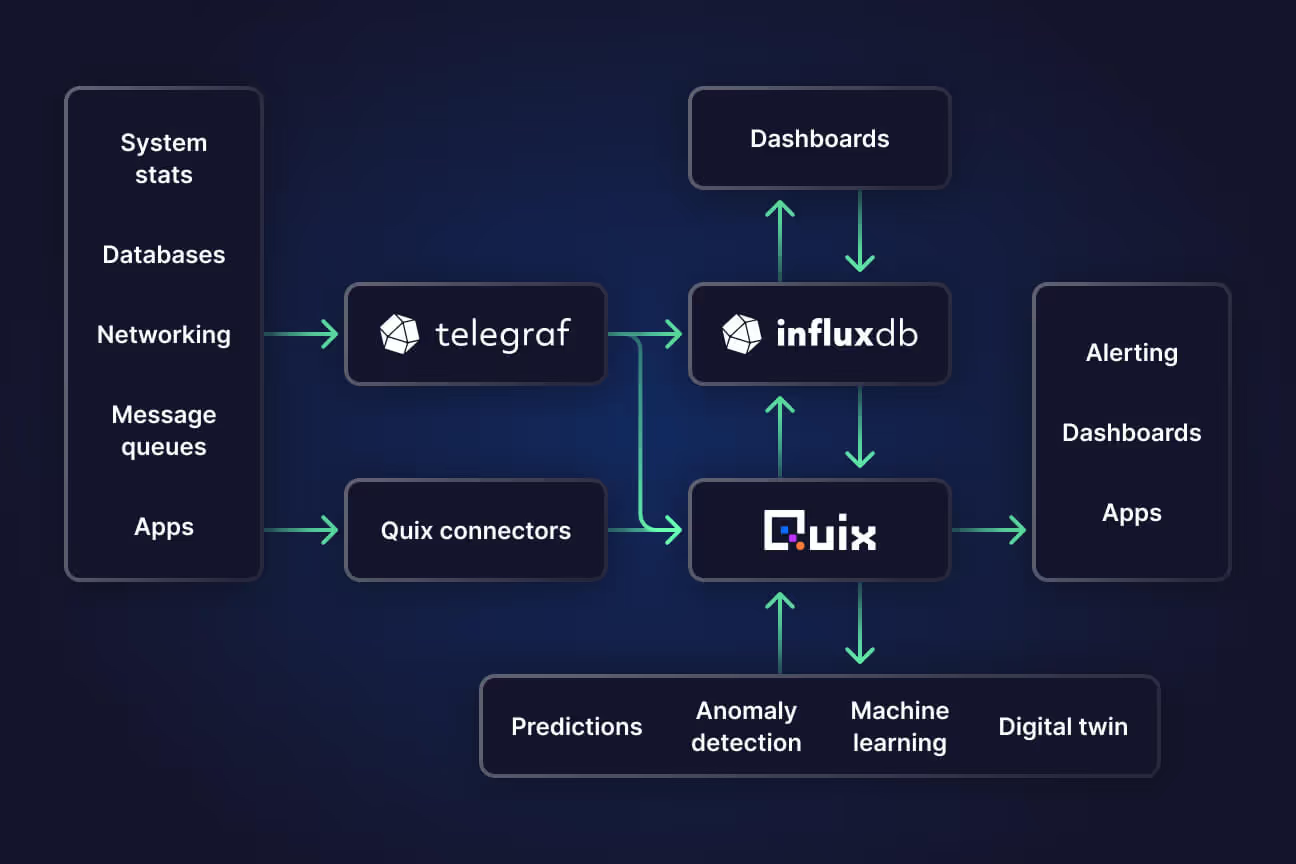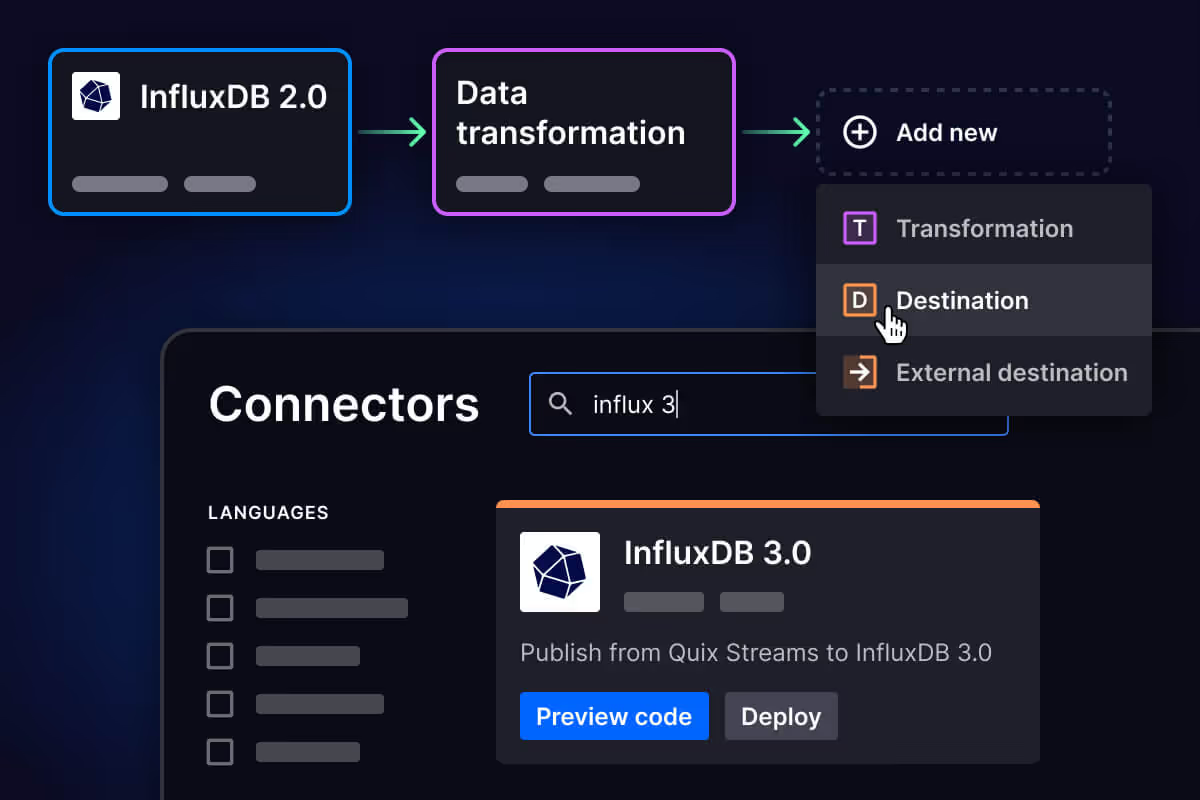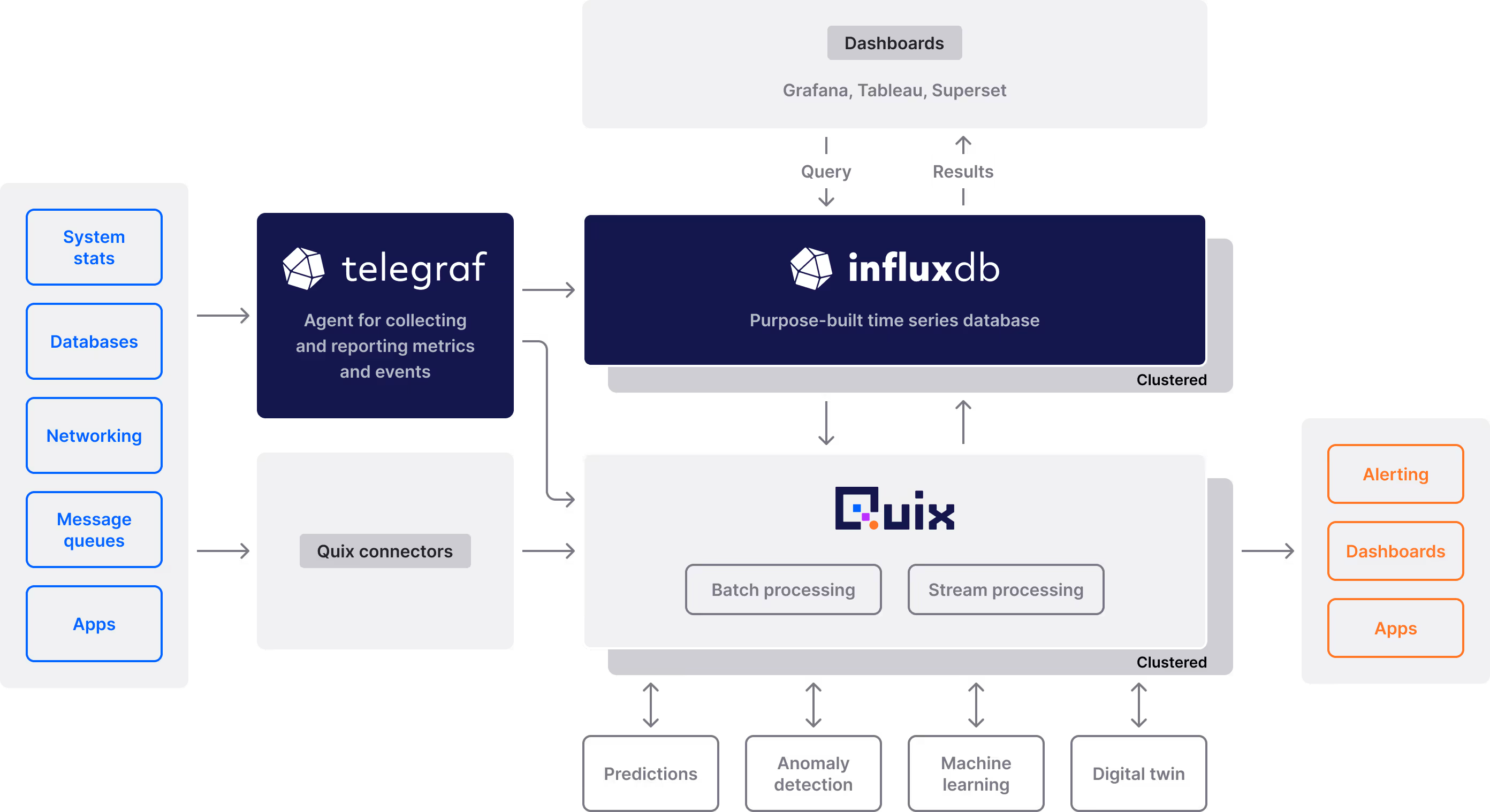Built for processing data by time-series experts
Quix was founded by ex-McLaren Formula 1 engineers who built and managed their Telemetry Analytics Platform with InfluxDB. Having an easy to use yet powerful data processing solution to pair with InfluxDB was the missing piece. Quix has been tested to efficiently and reliably stream and process over 60,000 fields per measurement at kilohertz frequency per Field.
.svg)





